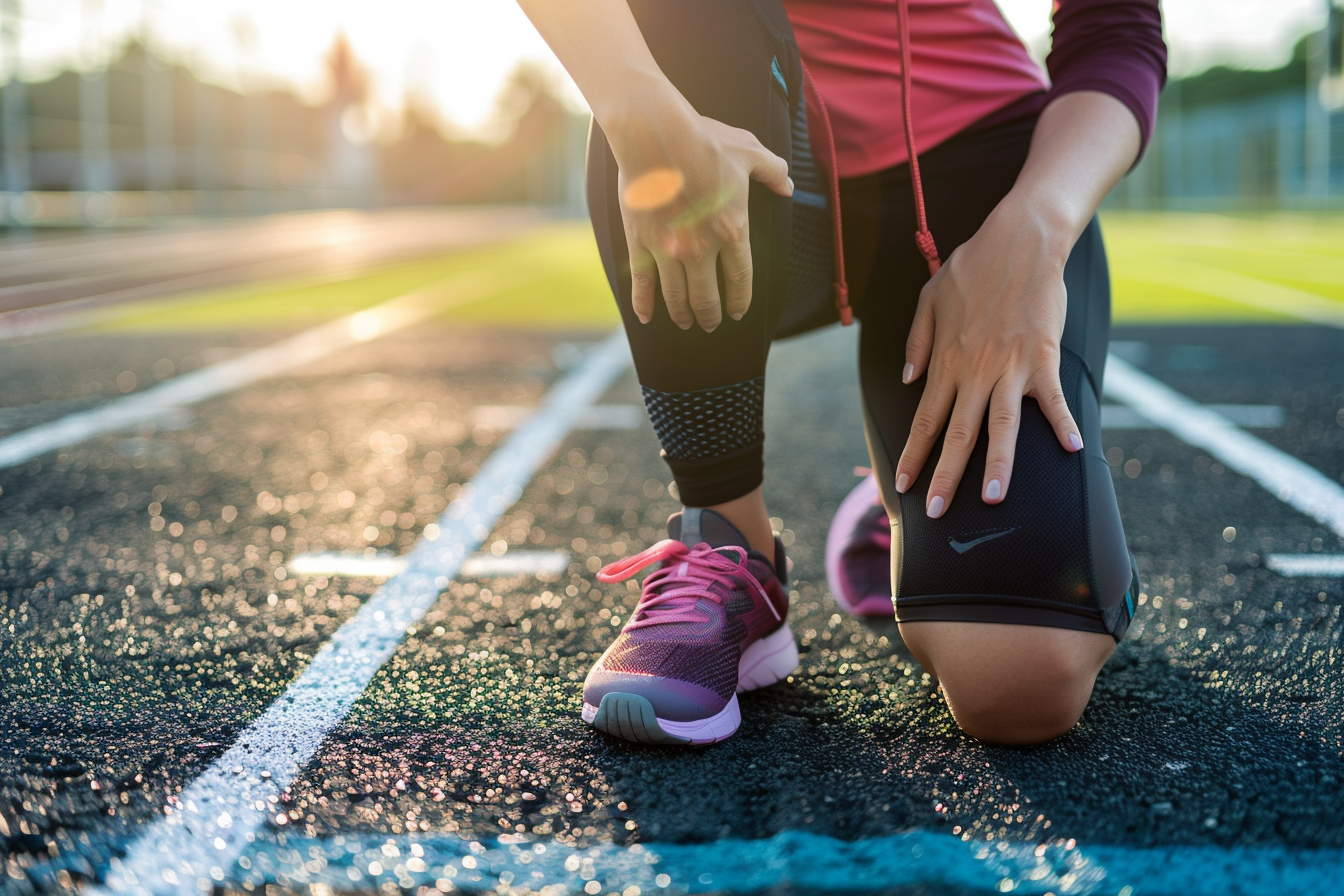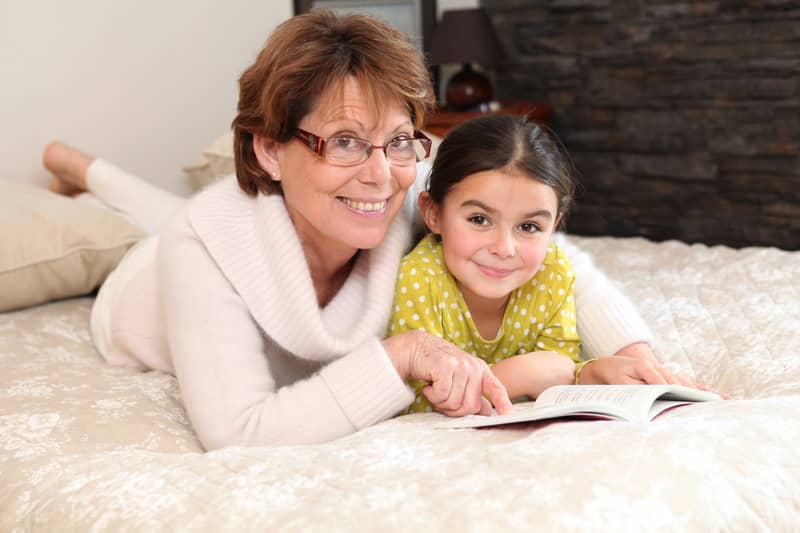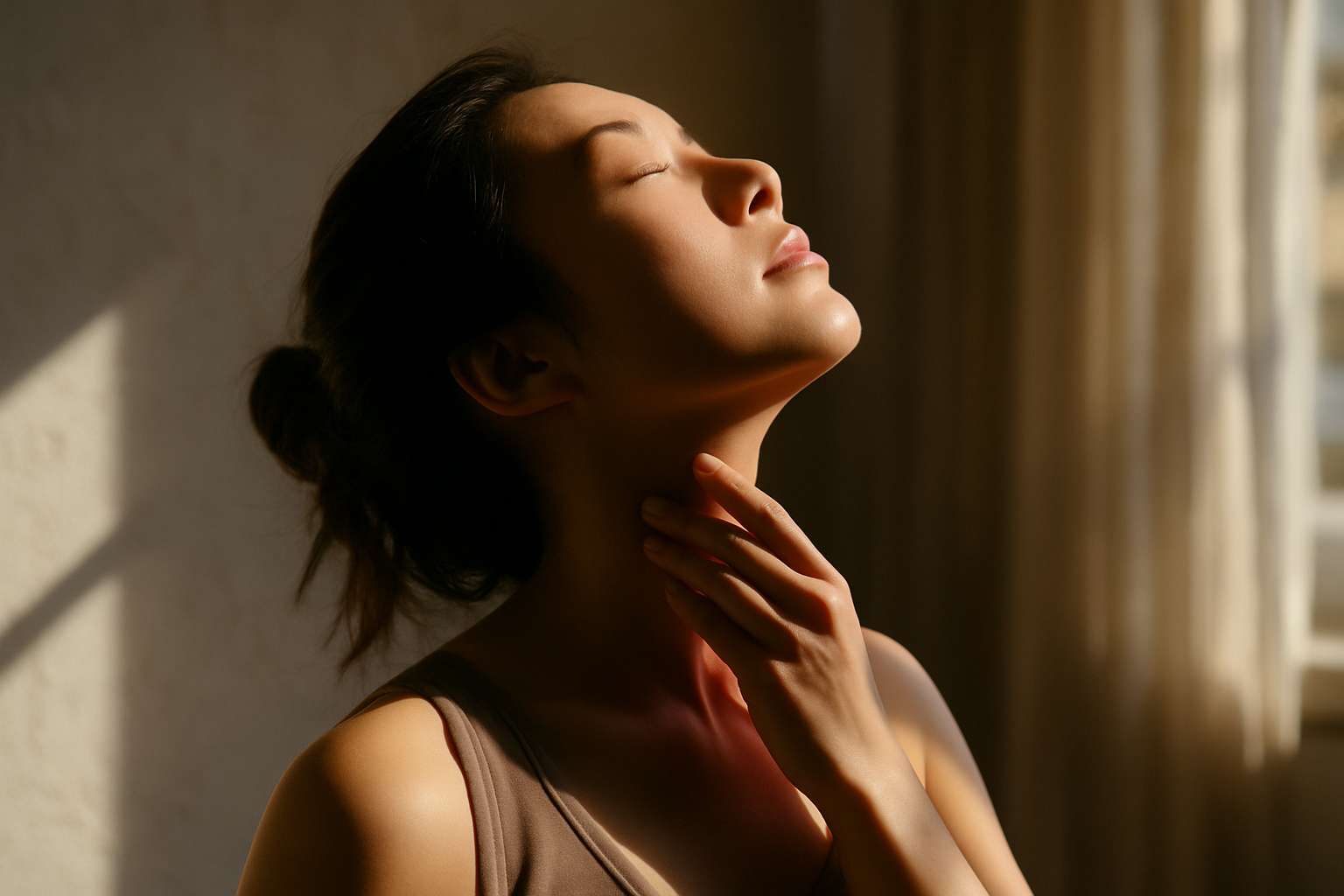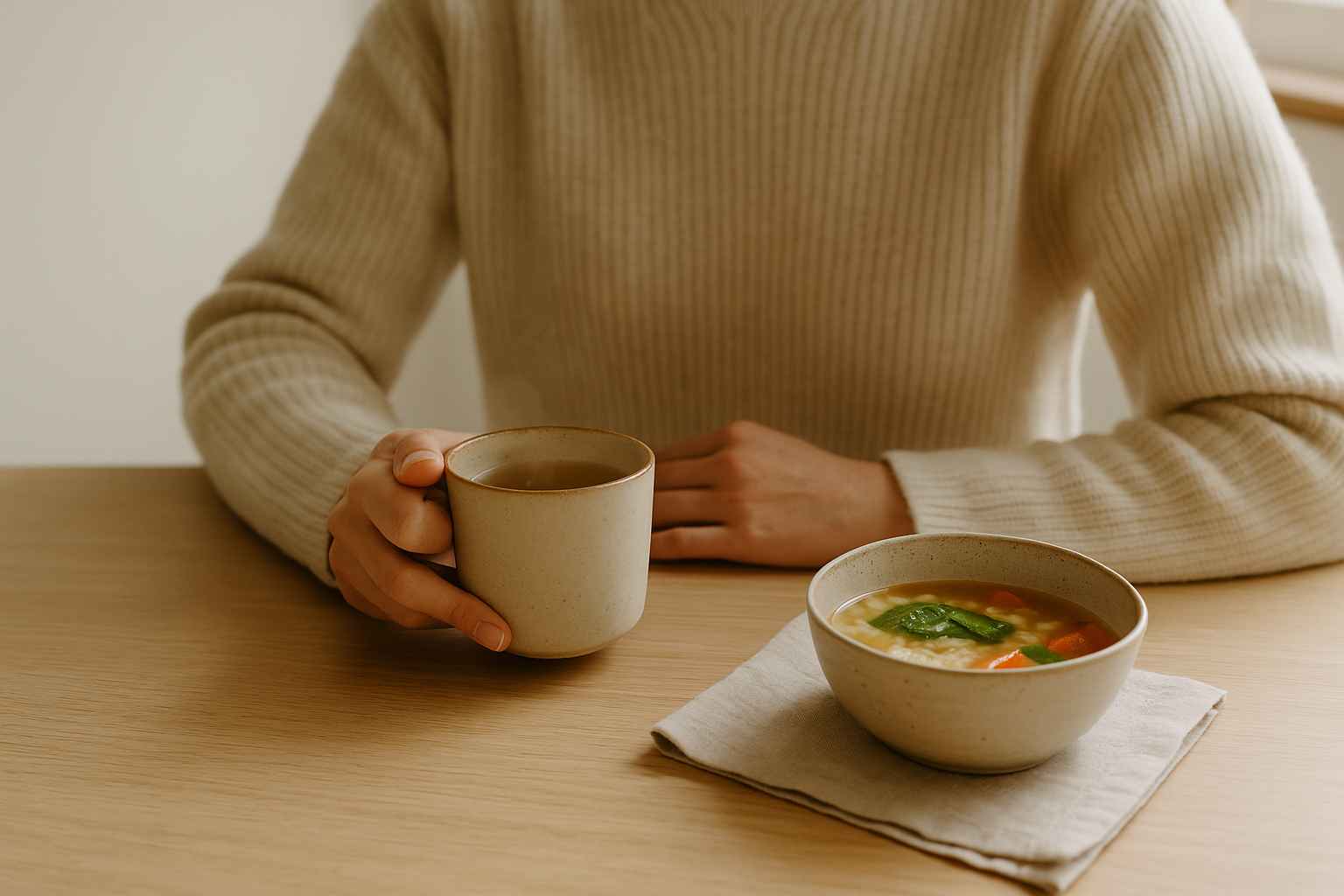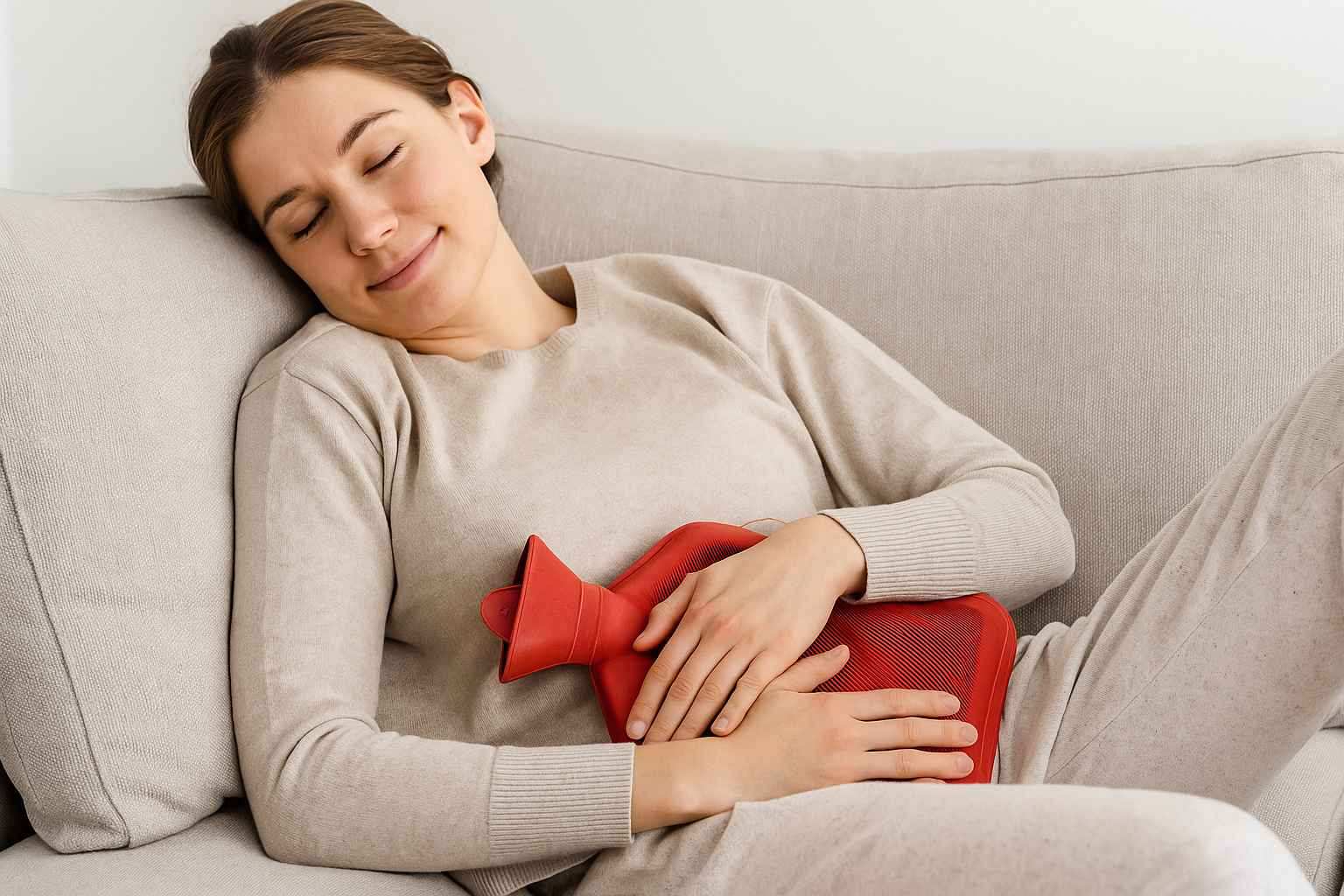Knee pain can range from being a nuisance to being completely debilitating. Some sources of knee pain, like patellar tendonitis, tend to worsen over time if they are not treated. The challenge here is finding treatment options that fit your physical, financial, and accessibility needs. Acupuncture for patellar tendonitis is a simple solution that can benefit a preexisting treatment plan and give you more control over healing this common overuse injury.
If you are considering acupuncture for tendonitis in the knee, it is important to know where and how to start. This article covers the most popular and effective acupoints in Chinese Medicine for managing knee pain related to patellar tendonitis and restoring your range of motion.
Can Acupuncture Help Patellar Tendonitis?
Tendonitis, regardless of where it is in the body, generally includes inflammation or degradation of the tendon. In Western medicine, pharmaceuticals, surgical intervention, and various forms of physical therapy are used to reduce pain levels in the knees. While these methods are often helpful for restoring your range of motion, they can be expensive and are not always accessible.
Acupuncture for patellar tendonitis is a treatment you can practice whenever you need relief from tendonitis-induced knee joint pain. It is free and easily accessible; even if you receive other treatments, it is still very beneficial. Acupuncture can help heal patellar tendonitis by increasing blood flow, reducing blood congestion, relieving swelling, and increasing healing.
Can Acupuncture Cure Tendonitis?
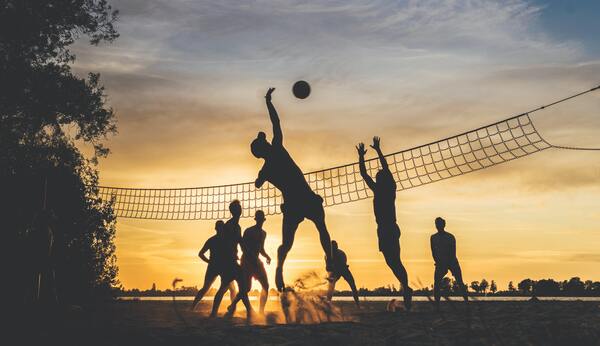
Acupuncture has been used throughout history to treat all forms of tendonitis, including acupuncture for Achilles tendonitis and acupuncture for shoulder tendonitis. Whether or not acupuncture can cure tendonitis is dependent on the severity of the tendonitis and the frequency of the treatment. Current clinical views suggest that acupuncture is capable of supporting the healing process, but more research is needed before it can be labeled confidently as a cure.
How Many Sessions Of Acupuncture Do You Need For Knee Pain?
Acupuncture for patellar tendonitis is an effective treatment, but it is not an overnight cure. While acupuncture for gastrocnemius tendonitis and patellar tendonitis can reduce pain and inflammation in the afflicted area when used properly, it generally requires multiple treatments and may do well when combined with physical therapy.
The frequency and duration of acupuncture for patellar tendonitis are based on individual injuries and their intensity. This form of traditional Chinese medicine may take a bit longer than Western medicines, but as long as the proper points are stimulated pain relief should take effect. Chronic pain may require continuous treatment to be managed.
Can acupuncture treat knee problems?
Acupuncture can be used to treat knee problems and general knee pain. Even if you don’t have a diagnosis of patellar tendonitis, you can still practice acupressure to treat generalized knee pain. Knee pain can appear at any age for a variety of reasons, and research suggests that stimulating the proper acupuncture points can decrease pain levels anywhere from 4 months to 2 years after treatment.
Acupoint: ST-32 (Other Names: Stomach-32/Fu Tu/Crouching Rabbit)
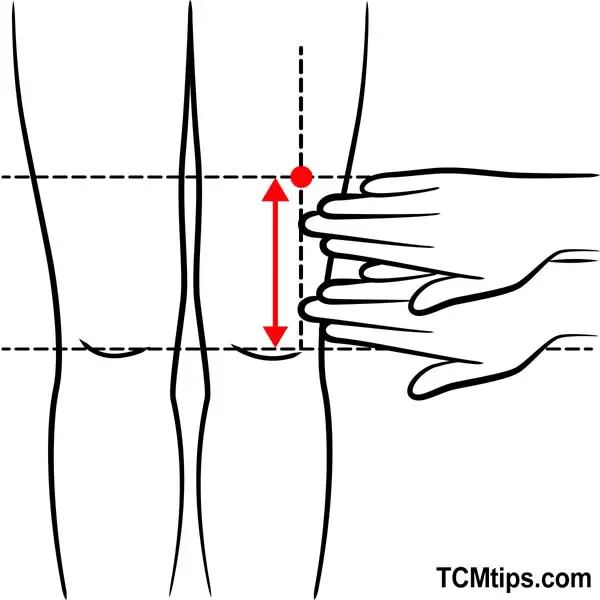
ST-32 can be found on the upper thigh, above the patellar tendon. This point is commonly used to treat paralysis of the lower extremities because it improves blood flow to the legs allowing them to heal and release any stagnant energy making it one of the best acupressure points for fibromyalgia.
When using ST-32, you will notice a relaxation of tension and any coldness you may have felt behind your knee. This is because ST-32 relaxes the quadriceps, which lightens the load on your patellar tendon. Less tension in your leg muscles makes for less pain and a better chance of healing your tendonitis.
To activate this point, you must first locate it. ST-32 is 6 cun up from the top of your knee cap near your outer thigh.

This point is generally in line with the outer edge of your femur, but you can not easily feel that through palpation. You will know you have located the correct point when applying firm pressure results in relaxation of the nearby muscles and pain relief.
Acupoint: ST-34 (Other Names: Stomach-34/Liang Qiu/Ridge Mound)
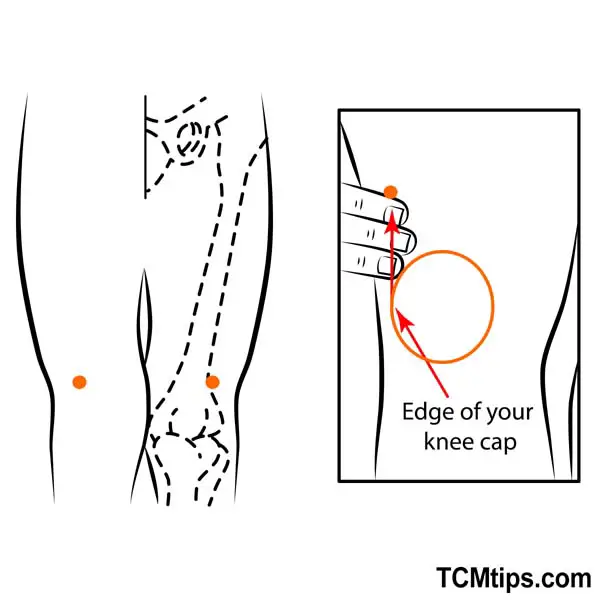
The lower thighs contain a highway of stomach channel points that are fantastic for relieving pain, which is why ST-34 is also on this list. This point is known in acupressure for inflammation relief as it relieves swelling in the lower extremities, especially around the knees. All of the inflammation reduction, increased blood flow, and muscle relaxation stimulated by this point makes the perfect recipe for healing a damaged patellar tendon.
You can best locate this acupoint when your leg is straight, or your knee is flexed. In this position, you should be able to feel the outer edge and upper edge of your knee. Trace two cun up from the outer edge of your knee cap, and your fingers will fall right onto the ST-34 point. Apply firm pressure here while taking deep breaths. It may help to wrap your hand around your leg for support while applying pressure with your thumb.
Always remember to stop if the pressure starts to become painful.
Acupoint: Bl-37 (Other Names: Urinary Bladder-37/Yin Men/Gate of Abundance)
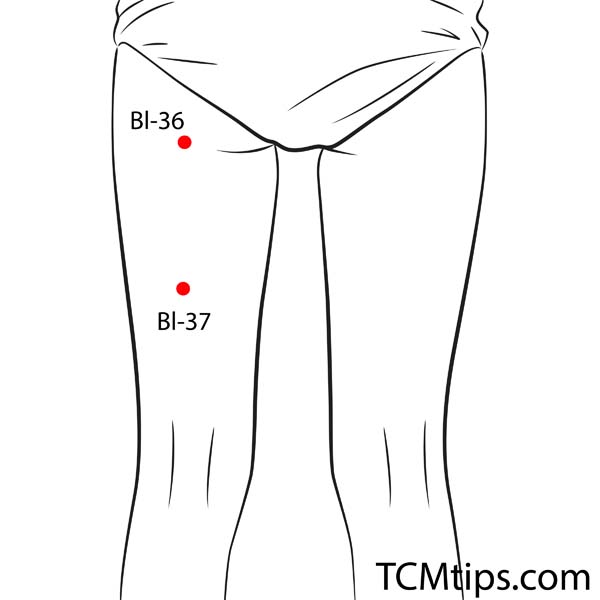
Since the patellar tendon extends into the thigh, it should come as no surprise that pressure points for thigh pain double as acupuncture for patellar tendonitis. BI-37 is the best of both worlds because this bladder channel point relaxes the leg muscles that pull on the patellar tendon and provides easily accessible pain relief if you know where to look. This point is also known for aiding in the reduction of thigh muscle atrophy which is great because it sets these muscles up to better support your patellar tendon once everything has healed.
BI-37 is on the back of your thigh, so it may be easiest to access this point in a seated position with your knee slightly bent. It is in the center of your thigh, right in the depression between your hamstrings. To find the height of this point, you will need to measure six cun down from Bl-33 or 8 cun up from Bl-40. BI-40 may be an easier point of reference to use since it is in the center of the back of your knee, right where the skin creases when bent. Since this point is very close to tendons that may be painful or damaged, apply lighter pressure.
Acupoint: Bl-40 (Other Names: Urinary Bladder-40/Wei Zhong/Middle of the Crook)
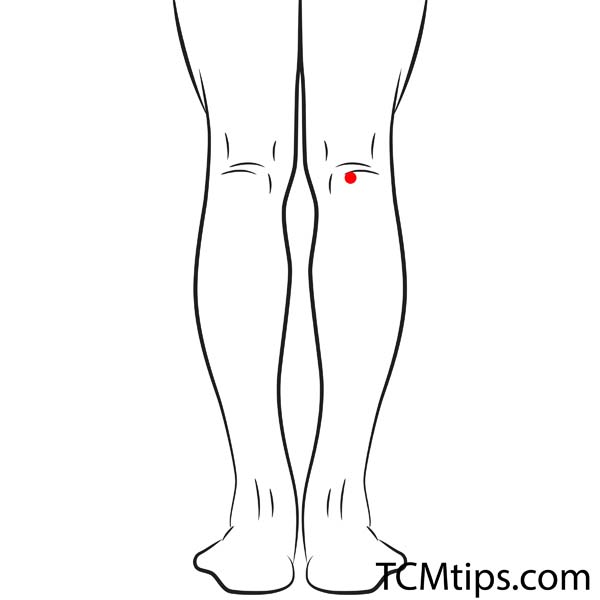
The knee includes a network of tendons that all work together, So to heal the patellar tendon, you often have to treat and relax the surrounding tendons. Bl-40 falls between two tendons in the back of the knee and is effective in relieving pain around the knee, which is why it is often referred to in acupuncture points for knee osteoarthritis. Once activated, this point should relieve blood congestion and pain in the knees.
To activate Bl-40, you will either have to sit down, have a friend help you, or bend over while maintaining your balance. This point is in the middle of the crease created at the back of each knee. This point is surrounded by tendons, so while you apply firm pressure in intervals, be conscious of any painful sensations and stop or apply lighter pressure if this practice becomes painful.
Acupoint: Bl-39 (Other Names: Urinary Bladder-39/Wei Yang/Lateral End of the Crease)
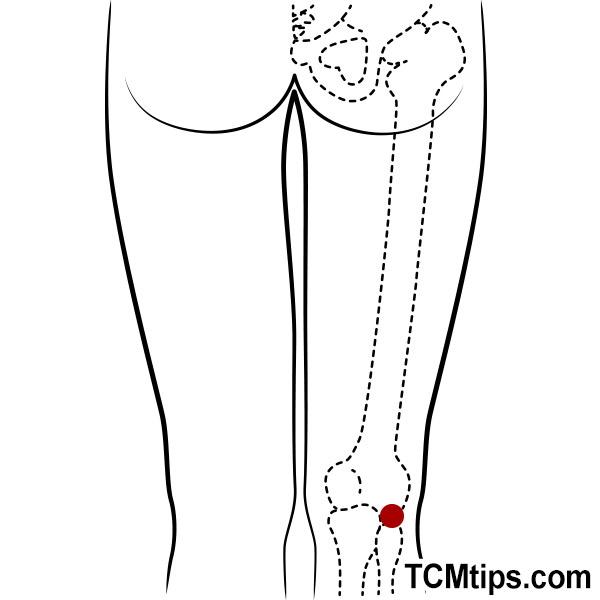
If you are looking for rapid relief from gastrocnemius tendonitis, then Bl-39 is your go-to point. This acupuncture point is known for quick relief of pain associated with the gastrocnemius muscle and its ability to relax tense tendons. With the relaxation and pain relief offered by this point, you won’t have to worry about being so restrained by your tendonitis. Long-term treatment of this point can even result in relief from lower back pain.
Bl-39, also known as Weiyang, can be found in close proximity to Bl-40. Both points lay on the traverse creases created at the back of your knees, however, Bl-39 is at the external portion of that line. Instead of falling between the tendons at the back of the knee, it falls to the outside and should be firmly massaged for pain relief.
Acupoint: Bl-57 (Other Names: Urinary Bladder-57/Cheng Shan/Support the Mountain)
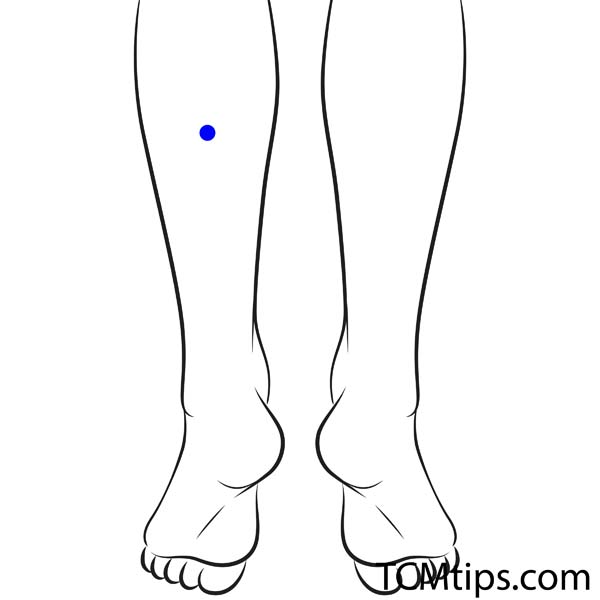
Bl-57 is one of the most effective acupressure points for leg pain relief. This point works by alleviating pain and tension in the calves to prevent unnecessary pressure on the patellar tendon. This point also serves to relieve tension on the gastrocnemius muscle, which could be contributing to your knee pain. Once your tendons are relieved from muscle tension, they are free to move and heal better.
Bl-57 can be located in the posterior center of your lower leg. This can be calculated as 8 cun down from the line at the back of your knee or 8 cun up from your ankle. This point is both vertically and horizontally centered on the lower leg, falling right into the depression at the base of your gastrocnemius muscle when your toes are flexed down.

Try our Anti-Aging Gua Sha Tool designed to bring out your skin’s natural glow.
Best Gua Sha Product- Anti-Aging: The tool is designed to target 11 specific aging signs such as wrinkles and sagging skin. By following the 7-step routine, users can improve skin firmness and reduce fine lines naturally.
- Enhances Skincare Routine: It works effectively with serums and lotions, boosting absorption and efficacy of skincare products.
- Visible Skin Improvement: Users can expect a smoother complexion, reduced puffiness, and a more youthful appearance.
 P. Sze
P. Sze 

